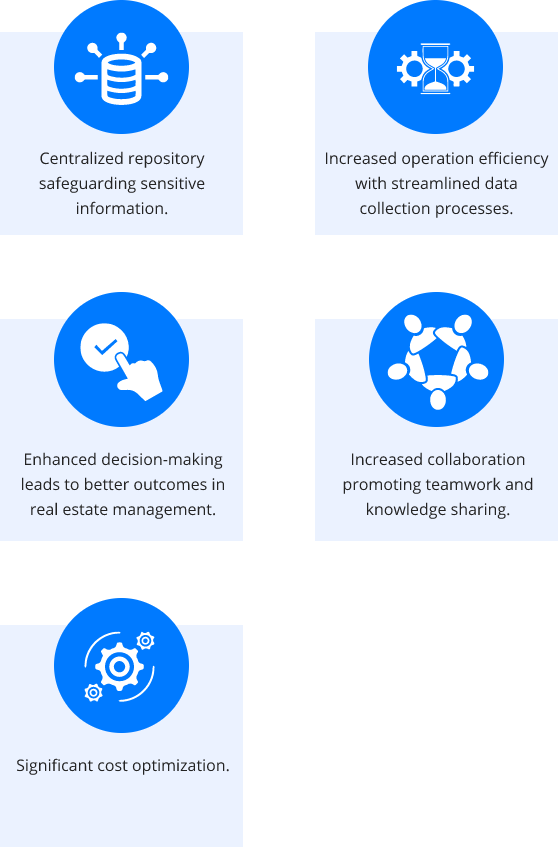CASE STUDY
Client Reduced Operational Deficiencies By Enhancing Data Visibility

Business Case
The client faced the challenge of optimizing real estate management to reduce costs and boost productivity. They recognized the need to align real estate utilization with business unit performance to tackle excess space effectively. Seeking a solution, they required centralized and streamlined data entry and collection for owned or rented properties. They aimed to delve deeper into their real estate data, enhancing organization and visibility through advanced filtering. Additionally, they sought to leverage data visualization to enhance decision-making.
Our Solution
i2e has engineered a practical solution to address the challenge of collaborating on real estate projects while safeguarding sensitive data.
Our secure collaboration platform seamlessly integrates with Portfolio One, providing a centralized repository for real estate data to ensures that all information remains securely stored and easily accessible to authorized users, without the risk of exposure to sensitive data.
We added some automation features to real estate data, minimizing manual effort and enhancing data accuracy.
We also added the feature of advance filtering and organization features, allowing users to segment and organize real estate data based on their specific requirements.
Stakeholders can gain actionable insights and make informed decisions by using Portfolio One’s data visualization tools can transform data into visually stunning charts, graphs, and maps.
Overall, the collaboration platform provides intuitive interfaces and customizable design templates to ensure that clients can effortlessly create professional-looking reports and presentations with minimal effort, further enhancing collaboration and productivity.
Challenges Overcome
- Integration data from variety of disparate data architectures and source systems.
- Lack of metric transparency due to manually assembled reports for strategic decision-making, leading to inconsistency and data unreliability.
- There was a need to link decisions about facilities to business strategy, highlighting challenges in aligning real estate management with broader organizational goals.
- Maintaining optimal facility utilization and financial performance to keep eye on the occupancy-to-operating-income ratio.
Benefits
- Enhanced efficiency through streamlined data collection and centralized data management.
- Better protection and security of sensitive data enabling clients to collaborate on real estate projects.
- Improved data accuracy with up-to-date and reliable information.
- Enhanced data management with advanced filtering and organization features.
- More actionable insights with data visualization capabilities facilitating better understanding and decision-making.
- User-friendly interface enhancing collaboration and productivity.
Results



